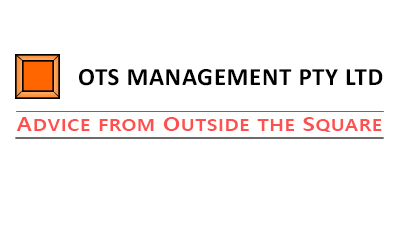I always tell my small business clients that they can't afford to "leave the numbers to their accountants."
Most people start their business to achieve a great goal, whether that be to serve their customers well, or to build a great product, or even just to do something they love while finding a way to enjoy life and spend time with family.
So it's not surprising that small business owners with no formal training in accounting think that they can leave the numbers to their accountant.
But you can't really, and this is why.
Whatever your business goal when you started the business, you need to make a profit. Making a profit funds your lifestyle, or rewards you for building a great product or serving your customers well.
If you "leave it to your accountant", even if they are a great accountant, the information will be late to some degree, it will be backward-looking, and he or she may not explain all the details that may mean a lot to you if only you knew!
So, if you want to grow your business, and you want to make a profit, then it is your responsibility to get to understand some of your numbers.
Here are 5 important numbers you should know about your business.
#1 Your Break-even Point.
Your break-even point is the volume of sales at which your business breaks even. Breaking even means that your income covers all fixed and variable expenses.
Fixed expenses are those expenses that don't vary according to the volume of your activity. For example, rent is a fixed cost. Rent does not change whether you make $100,000 worth of sales or $1 worth of sales.
Variable expenses are those expenses that vary depending on the level of your activity. For example, delivery costs will go up if you make and send out 1,000 sales items, and go down if you make and send out 10 sales items. In a factory, electricity is likely to be a variable, depending on usage.
Your break-even point tells you what volume of sales you need to make in order to break even. If your sales are less, you will make a loss. If your sales are more, you will make a profit.
How do you calculate your break-even point?
First, calculate your total fixed expenses in a year.
Then, calculate the margin per unit after variable expenses (Selling Price per unit divided by Variable costs per unit, as a percentage).
Divide your fixed costs by the margin.
Here's an example of a business that:-
- Has $100,000 per annum in fixed costs
- Has a 20% margin after variable costs
100,000 / 20% = $500,000
This business' break-even point is $500,000 per annum in sales. To make a profit, they need to sell over $500,000 per annum.
Knowing your break-even point helps you to understand when and why you make losses, and what you need to do to make a profit.
#2 is Cost of Goods Sold and Gross Profit.
The cost of goods sold is the total of all the direct costs that it takes to produce a sale.
Each business will have a different combination of direct costs that make up their cost of goods sold. Here are some examples:-
- A legal firm's cost of goods sold are mainly lawyer's salaries the salaries paid will directly result in fees earned);
- A fashion clothing shop's cost of goods includes the cost of buying the stock, and freight to get it to the shop - without stock in the shop, they will have nothing to sell;
- A manufacturing company will include raw materials, freight, a portion of machinery costs, and possibly salaries.
As you can see, it is the direct costs that relate to what is being sold. For example, in the case of the manufacturer, rent is not a direct cost - they could produce what they sell anywhere else.
Why do you need to know your cost of goods sold?
Because your sales less your cost of goods sold gives you your gross profit, that is, the profit you make on your products or services that contributes to paying for your overheads like rents and administration of your business.
The higher your gross profit, the higher your net profit (and by the way, the lower your break-even point).
This gives you the information to make pricing decisions, as well as compare the cost of suppliers and the effect of volume discounts and help you in negotiations.
#3 Your Net Profit.
What happens if you have $100,000 cash in the bank at the end of the year? Have you made a $100,000 net profit?
Not if you owe your suppliers $110,000 at the end of the year - in fact, you've then made a $10,000 loss despite what you have in the bank.
Net profit is made up of many things and is not measured just by the cash you have left in the bank at the end of the year.
Here are some examples of what is included in calculating your net profit, and what is not:-
- Accounts receivable - included in your net profit even though you have not received the money because they are represented by sales made
- Accounts payable - included in your net profit even though you have not paid, because they represent expenses already incurred
- Assets like equipment or computers bought are not included in your net profit - even though you spent money, these are long-term items that are matched against your net profit over the life of the asset.
Ask your accountant to show you what expenses come off your sales - and what do not - to make your net profit. This information will help you to decide on what to improve.
Improvement is also about what your competitors are doing. A net profit of 35% on sales might sound wonderful but what if everyone else in your industry is making 40%?
#4 Your cash flow.
Okay, you've found out your break-even point and you are now making sales above that amount.
You understand your Cost of Goods Sold and your gross and net profits and it's looking good.
But you're still struggling to pay your workers and suppliers. What's going on?
It's likely your cash flow.
You've sold it - but you haven't collected your bills! Your customers haven't paid you yet.
To understand your cash flow - which could be a cycle behind your reported profits, you need to know the cycle of your collections from sales and the expected cycle of your payments to suppliers.
You need to know when your customers pay you.
You give them payment terms, but do they stick to it? What happens if they don't? Do you chase them?
You need to know when you have to pay your expenses - some are payable as and when they are expended (say salaries), some may have credit terms like 30 days from delivery.
Your task is to match collection cycles to payment cycles.
What you also need to understand is the pattern of these receipts and payments - are summer months when you buy more and so will need the most cash flow outwards upfront? How much do you have to pay out every week on rents, salaries and the like?
#5 Your Quick Ratio
Your Quick Ratio is an important measure of your liquidity.
It is a measure of whether you could pay all your current liabilities quickly if you had to.
Your Quick ratio compares "quick" assets to current liabilities.
Quick assets are cash or assets that can be quickly converted to cash. Accounts receivable are usually included as quick assets, but inventory is not because it is felt that you cannot normally convert inventory to cash quickly enough.
Sometimes, what is included as a quick asset is a judgement call. For example, you might include a temporary loan to an employee as a quick loan if you knew that they would repay you in the next few paydays, or you might not if you felt that they would not be able to pay you within the next few weeks.
Current liabilities are the debts you have to repay within the next 12 months. When you calculate this, don't forget to include 12 months' worth of loan repayments.
The Quick Ratio is calculated by dividing the total quick assets by current liabilities.
Here's an example, of a business that:-
- Has $100,000 in assets but only $90,000 of that is cash and accounts receivable
- Has $85,000 debts that need to be repaid over the next 12 months
Their Quick ratio is 90,000 / 85,000 or a ratio of 1.06 to 1.
In plain English this means that this business has $1.06 of cash or assets that can be quickly converted to cash now, to pay every $1 of debt that has to be repaid in the next 12 months.
This is a "safe" Quick Ratio. But what if the Quick Ratio had been $0.56 to $1?
Anything less than 1:1 is potentially a serious liquidity issue. A Quick Ratio of 56 cents to $1 debt means that if called up, you could not pay your debts quickly.
You should compare your Quick Ratio now to past periods and evaluate the trend. Is it getting better or worse? You should also check with your industry average - are you better or worse? If the industry average is 2:1 and yours is 1:1 then why are you so different?
These are the 5 numbers you really need to know about your business.
It's important that you know them and you keep updated about them.
If you want us to help you understand yours, get in touch with us and ask us to look through your accounting and business information.
If your accountant is unable to help you pull this information together, click on the Contact Us tab on our website at www.otsmanagement.com.au and get in touch with us to organise an obligation free first meeting.
Why don't you sign up to get these free ideas and newsletters to go directly to your inbox? Click on this link http://eepurl.com/cCRyvL and sign up! Don't worry - we hate spam too so you can unsubscribe at any time and we promise never to give your details to anyone else.




